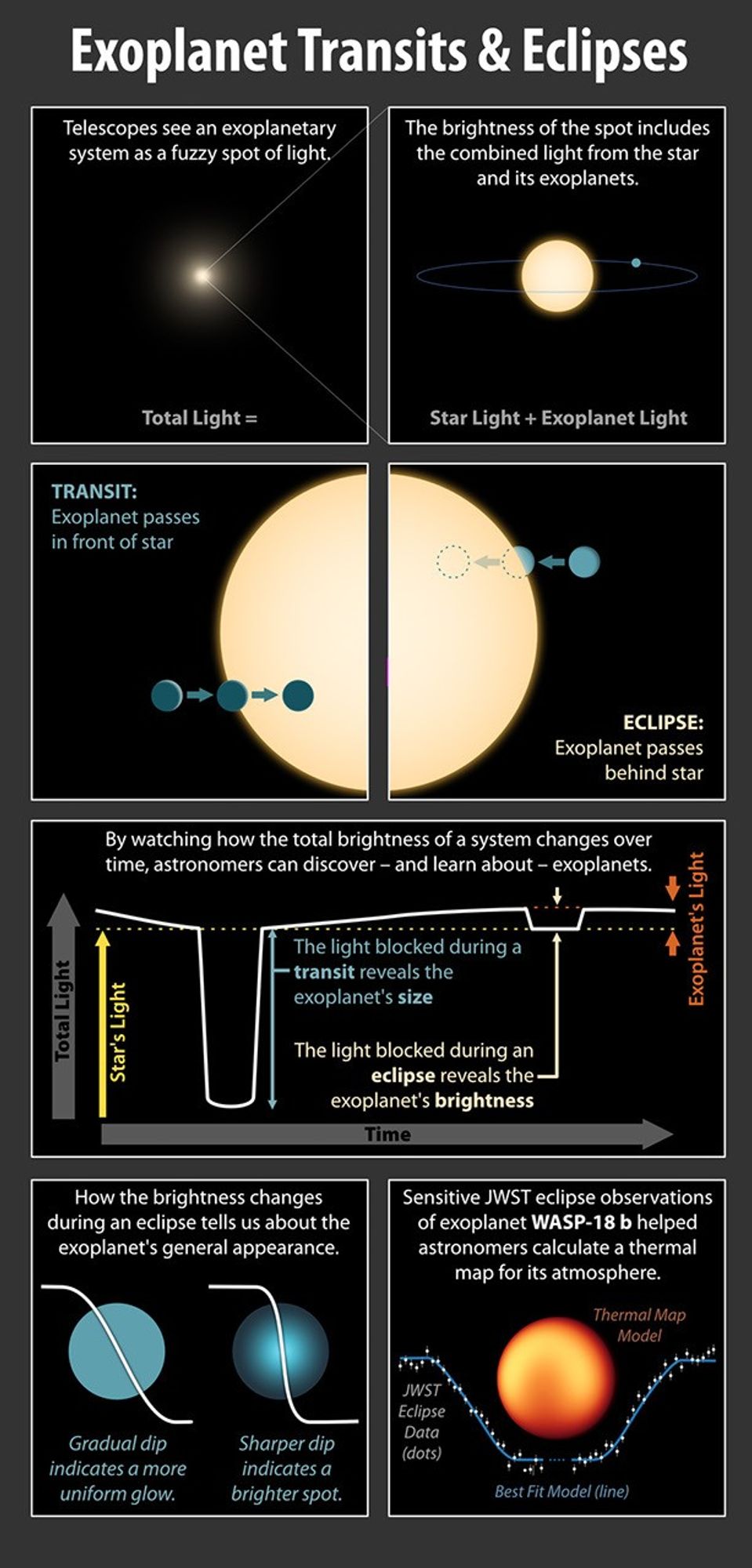Exoplanet Eclipses and Transits for WASP-18 b
| Credit | NASA/JPL-Caltech (R. Hurt/IPAC) |
|---|---|
| Language |
|
Scientists used the James Webb Space Telescope to observe the exoplanet WASP-18 b and its star before, during and after the planet was eclipsed. By measuring the change in light when the planet travels behind the star, the planet’s brightness is revealed. From these measurements, scientists were able to make a temperature map of the planet’s day side. Displayed temperature range: 2,800 to 4,800 degrees Fahrenheit (1,500 to 2,600 degrees Celsius).
Visual description
A graphic is headlined Transits & Eclipses
Telescopes see an exoplanetary system as a fuzzy spot of light.
Total Light = The brightness of the spot includes the combined light from the star and its exoplanets.
Transit: Exoplanet passes in front of star
Eclipse: Exoplanet passes behind star
By watching how the total brightness of a system changes over time, astronomers can discover – and learn about – exoplanets.
The light blocked during a transit reveals the exoplanet's size
The light blocked during an eclipse reveals the exoplanet's brightness
How the brightness changes during an eclipse tells us about the exoplanet's general appearance.
Gradual dip indicates a more uniform glow.
Sharper dip indicates a brighter spot.
Sensitive JWST eclipse observations of exoplanet WASP-18 b helped astronomers calculate a thermal map for its atmosphere.
























